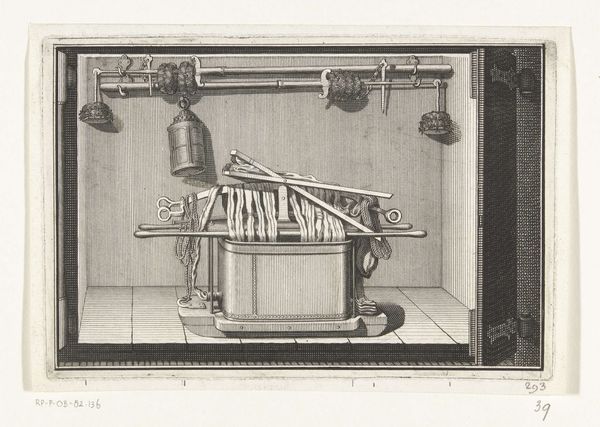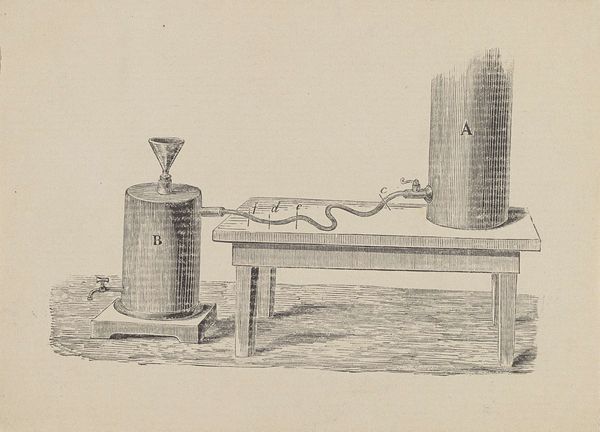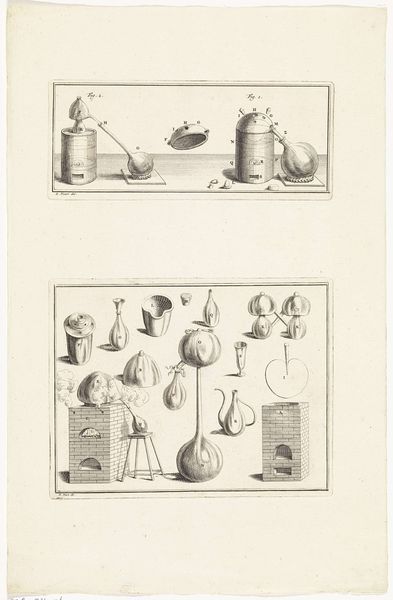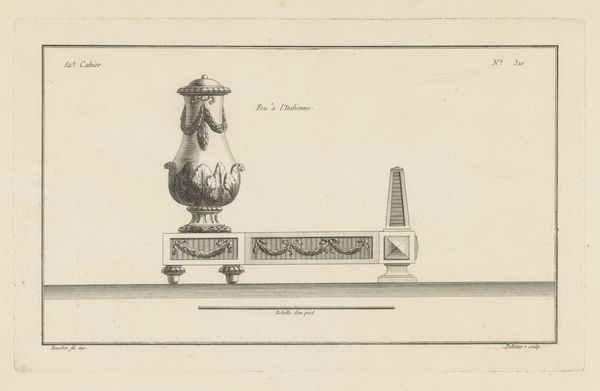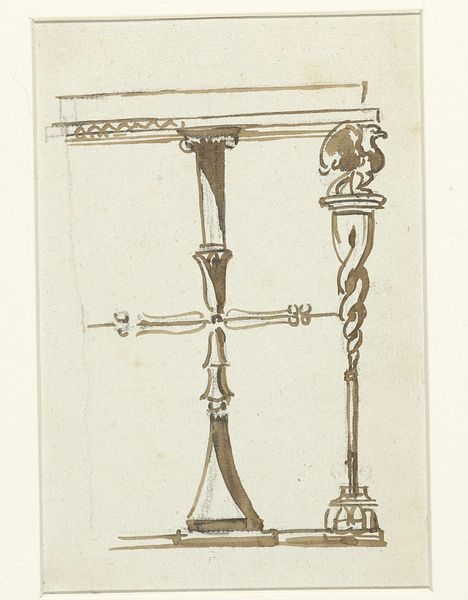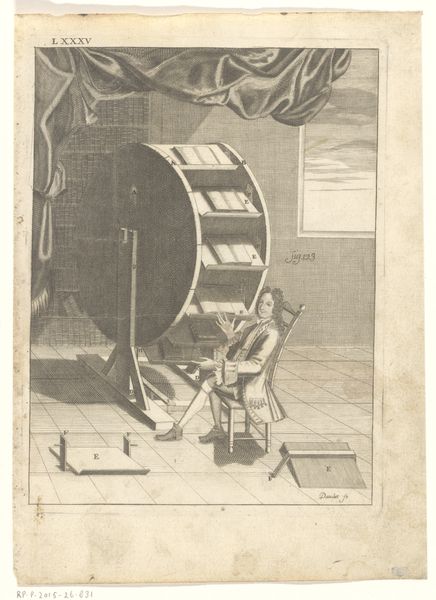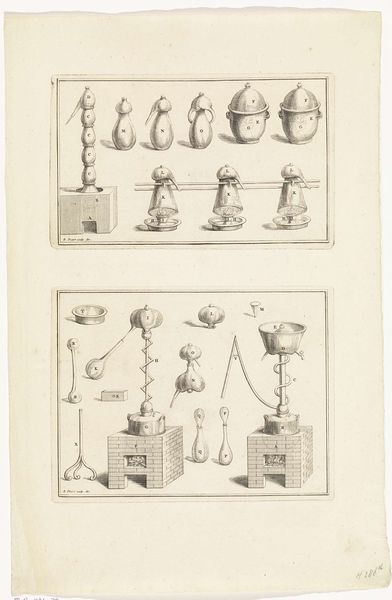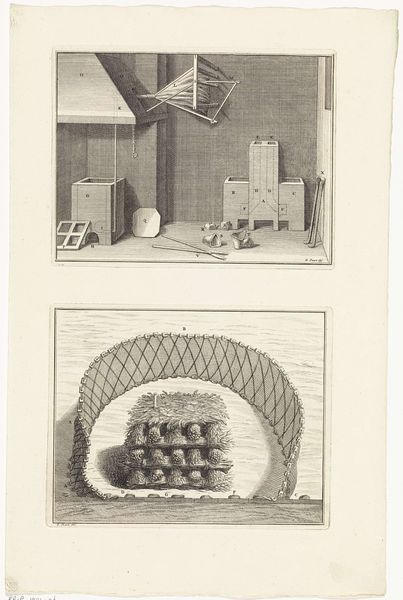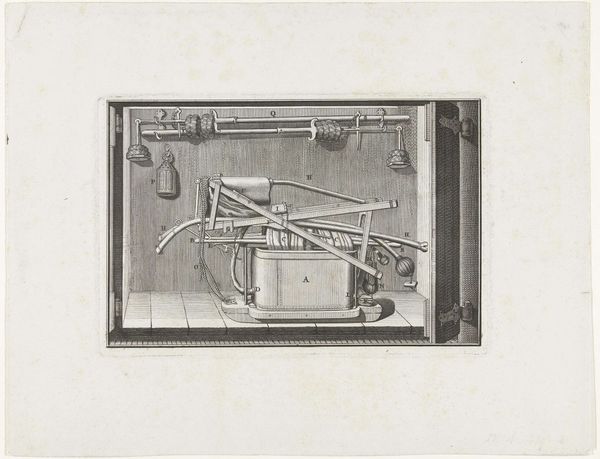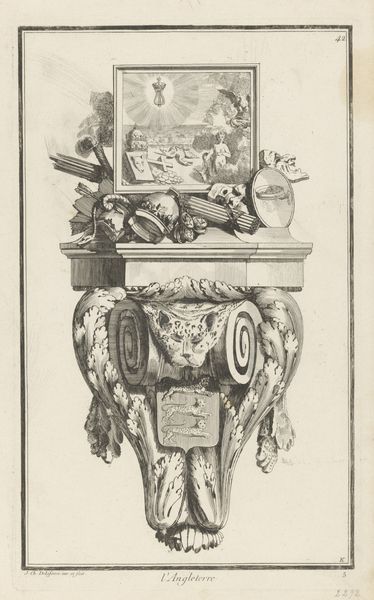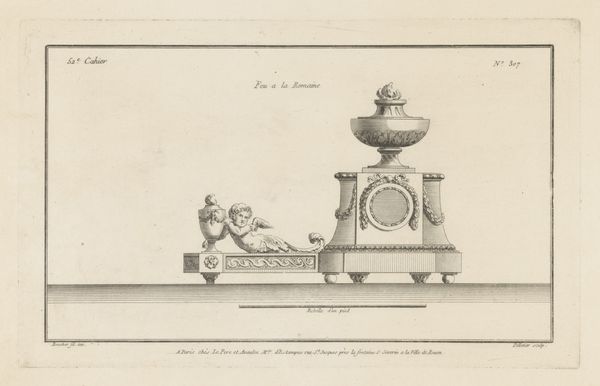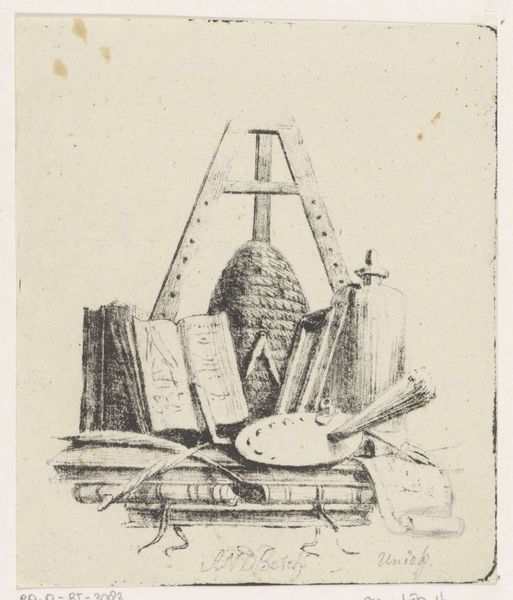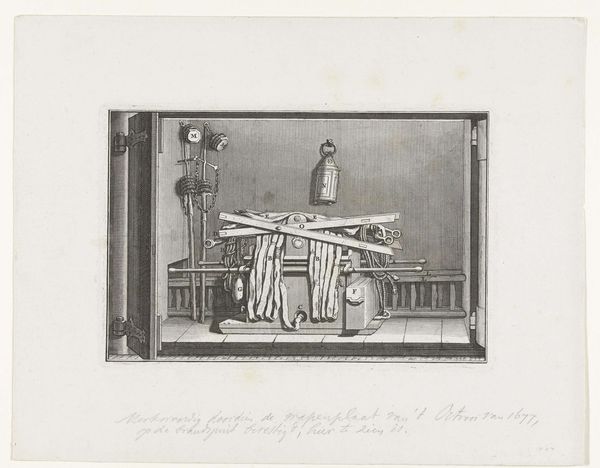
print, metal, engraving
#
baroque
# print
#
metal
#
engraving
Dimensions: height 290 mm, width 195 mm
Copyright: Rijks Museum: Open Domain
Curator: This understated print is entitled “Tafel der Toonbroden” and it's attributed to Philip van Gunst, dating from somewhere between 1685 and 1725. It's currently part of the Rijksmuseum's collection. What are your initial thoughts? Editor: The overall effect is austere. The engraving’s sharp lines emphasize the materiality of each object, and the repetition feels almost… functional? I am immediately thinking of the process, labor and daily domestic work implied. Curator: The subject is fascinating, isn't it? “Tafel der Toonbroden” translates to the Table of Shewbread. These were twelve loaves of unleavened bread, presented to God each Sabbath in the Temple of Jerusalem. Its representation is so interesting, a clear shift away from purely religious settings. Editor: Yes! Focusing on bread – such a crucial element and basic building block. We’re not shown figures in a glorious architectural space; instead, we are looking closely at a specific food item on its preparation. Curator: Precisely. And within the context of the Dutch Baroque period, there was a societal focus on trade, on what's been termed 'conspicuous consumption' as global power shifted and expanded. Do you think this print is reflective of those historical and social contexts? Editor: Absolutely. I mean, this artist is taking something with huge religious importance and centering its economic significance. And in metal, using the repetitive and potentially alienating labor of the engraver's process! Curator: It almost elevates a common item through technique, forcing the viewer to consider production processes, the skill of making a decent meal, and access. Editor: I agree completely. Looking closer, I can’t stop thinking about all of the human elements this artwork excludes while representing such tangible objects, creating tension by erasing specific people. The labor becomes both highlighted and obscured by style. Curator: Indeed. The context behind objects – historical or religious – impacts our viewing process more often than not, because it forces us to situate their representations. Editor: Very well said. And this has me re-considering how we often treat ‘craft’ processes versus artistic work more broadly. Curator: Exactly. This piece demonstrates what a careful focus on historical factors, materiality, and cultural value can reveal.
Comments
No comments
Be the first to comment and join the conversation on the ultimate creative platform.
